


Multimethod Modeling Environment
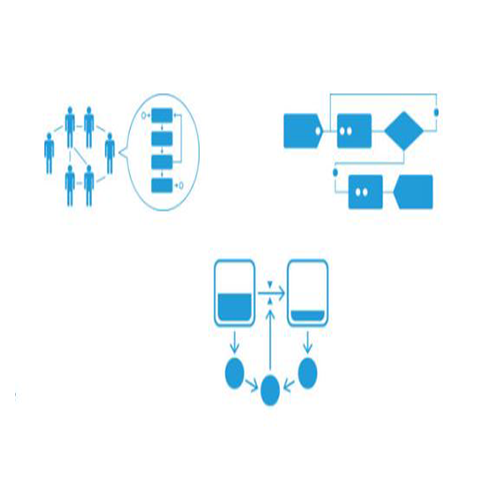





Develop models using all three modern simulation methods:
The three methods can be used in any combination, with one software, to simulate business systems of any complexity. In AnyLogic, you can use various visual modeling languages: process flowcharts, statecharts, action charts, and stock & flow diagrams.
AnyLogic was the first tool to introduce multimethod simulation modeling, and still remains the only software that has that capability.






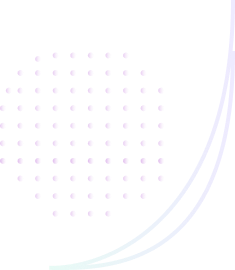





Animation and visualization
- Convert flowcharts into interactive movies with spectacular 3D and 2D graphics.
- Present your models to stakeholders in a visually attractive and self-explanatory way.
- Use the extensive set of graphical objects to visualize vehicles, staff, equipment, buildings, and other items and processes related to your business.
- Import custom 3D models, images, CAD drawings, and shape files into your simulations.
- Make your models interactive by adding intuitive navigation and controls.
- Turn your simulations into comprehensive management dashboards.
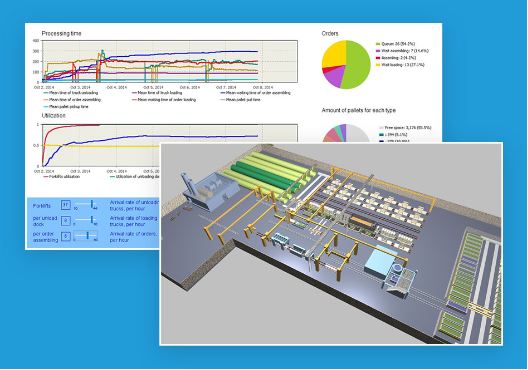













Industry-specific libraries


AnyLogic provides a unique suite of industry-specific tools in one package, at no additional cost:
- Process Modeling Library for generic business processes or workflows.
- Fluid Library to simulate bulk cargo and liquid transfer in industries like mining or oil & gas.
- Rail Library for rail transportation, terminals, and yards.
- Pedestrian Library for pedestrian flows in airports, stadiums, stations, or shopping malls.
- Road Traffic Library for car, truck, and bus movement on roads, parking lots, and factory sites.
- Material Handling Library for manufacturing and warehouse processes.
Pedestrian, Rail, and Road Traffic Libraries provide detailed physical-level simulation of objects’ movement and interaction, which is not supported by any other general-purpose simulation software tool.












AnyLogic is the only professional software tool available so far for building industrial strength agent-based models (ABM).
- With agent-based modeling, you can apply simulation in the areas where it had not been possible before, including marketing, social processes, and healthcare/epidemic models.
- ABM allows you to leverage your organization’s big data to populate your large-scale models with agents with personalized properties such as consumer behavior, individual skills, schedules, performance data, or health-related profiles.
- Agent-based simulation brings models from traditional areas, like logistics and manufacturing, to a new level of flexibility and ease of use, allowing you to represent entities and resources as agents with individual parameters and behavior.
Professional agent-based simulation software
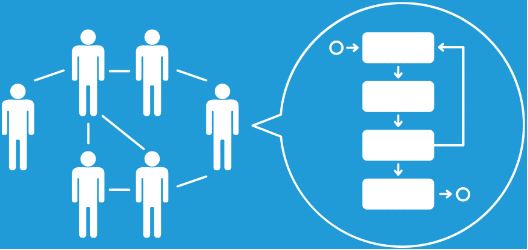













GIS Maps Integration


AnyLogic provides unique ability to use GIS maps within your simulation models:
- Maps can be used to model systems like supply chains, logistics networks, and other cases when you need to take into account locations, roads, routes, or regions.
- Built-in search in the style of Google Maps allows you to easily locate cities, streets, roads, hospitals, shops, and bus stops by using the map data. The search works both when you design the model and when the model is running.
- Model elements can be placed on the map and moved along existing roads and routes based on real spatial data.
- You can use free maps provided by AnyLogic both online and offline or choose tile-or shapefile-based maps from your favorite provider.












AnyLogic is the only simulation tool to offer a full range of cloud technologies, changing the way people run models.
- Use any device to run your model, including phones and tablets.
- Provide online simulation analytics to your clients with web dashboards.
- Leverage high-performance cloud computing for complex experiments.
- Deliver models privately to your clients using secure web repository.
- Share simulations publicly with the community and collaborate in the cloud.
- Available for free, as a paid subscription, or as a private installation.
Simulation in the Cloud














Rich Experiment Framework
- A powerful set of pre-designed experiments allows you to explore your model from different angles.
- Monte Carlo, Sensitivity Analysis, and Parameter Variation experiments help you find out how randomness and parameter change affect your model behavior.
- Simulation optimization allows you to find better solutions for your business challenges based on your constraints and requirements.
- All experiments can be executed using high-performance computing in AnyLogic Cloud.












Data interoperability
- Work directly with any data storage, including Oracle, MS SQL, MySQL, PostgreSQL, MS Access, Excel, and text files.
- Use the fast built-in AnyLogic database to configure and parameterize models, output simulation statistics and model execution logs.
- Integrate simulation models into your company’s data workflows with AnyLogic Private Cloud.
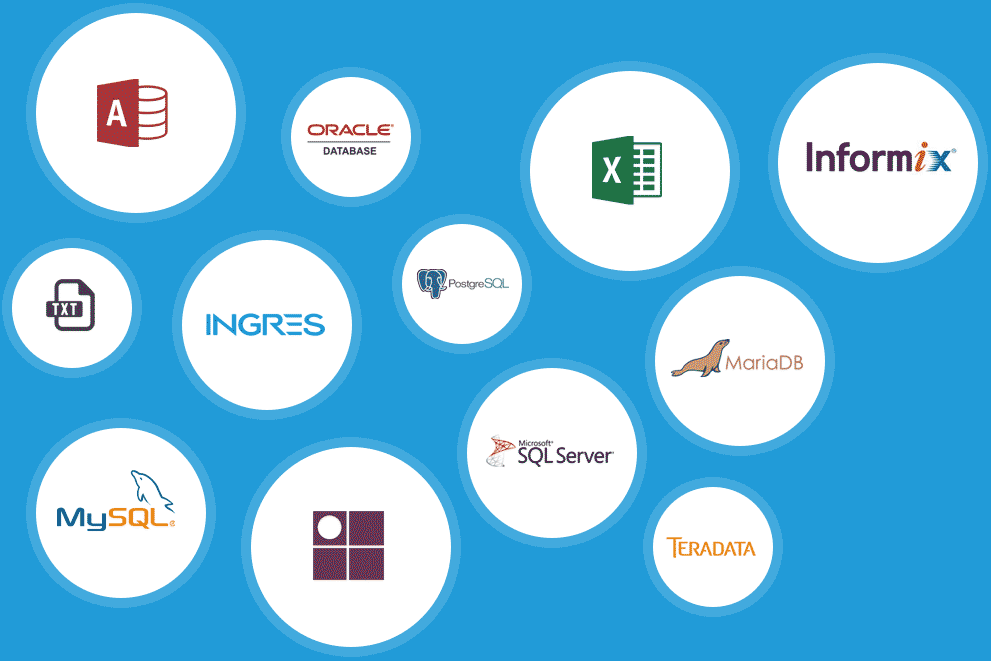













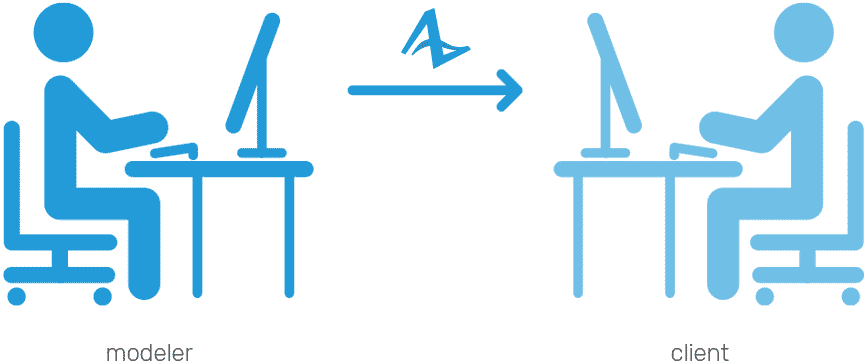

Model Export and Integration
- Export models as standalone Java applications to deliver them to clients and stakeholders.
- Models can serve as an advanced level of predictive analytics for your business: make them a part of your existing dataflow, integrate models with CRM or BI systems.
- Embed simulation models in your operational software, like ERP or MRP, for robust planning and risk reduction. Examples of use are short-term production scheduling or transportation planning.












Support in Model Building
- We provide unlimited consultative support to hard or even vague modeling issues – helping you make your models better!
- A question like “How do I model this object?” is a perfectly valid question for us.
- Average response time is less than 24 hours, including complex questions.
- AnyLogic support is highly ranked: 90% of our users are “completely satisfied” with the support services.














Extensible and Customizable Platform


- AnyLogic models are fully extensible at Java level, providing the user with unlimited modeling capabilities. Literally.
- You can design custom experiments for your special needs, or use your own algorithms and optimization engines. Also, you can create custom experiment workflows: for example, combine sensitivity analysis and optimization, with the results of the first experiment serving as an input for the second one.
- Create custom objects and reusable object libraries for your application areas and share them with your colleagues.
- A model can be configured from an external data source when the model is run, which means that you can change the whole model structure by simply changing the input data. This makes models reusable, helping solve many similar challenges without additional model-building effort.





